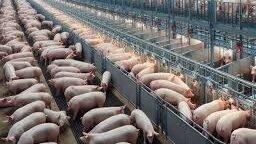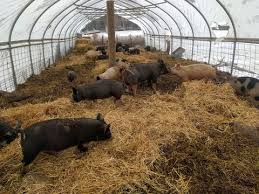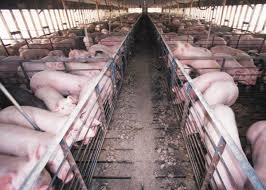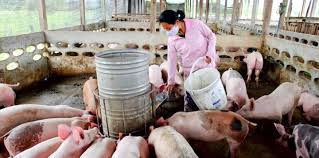Pig farming techniques are essential for those looking to establish a successful piggery or improve their existing operations. These methods not only enhance the productivity and health of pigs but also contribute to sustainable agricultural practices. With the rising global demand for pork, understanding efficient pig farming techniques is more important than ever.
In recent years, pig farming has evolved significantly, incorporating advanced technologies and practices that promote animal welfare, improve growth rates, and optimize feed efficiency.
These techniques can vary depending on the scale of operation, available resources, and specific farming goals. Both small-scale and large-scale pig farmers can benefit from learning about best practices in pig husbandry, feeding strategies, health management, and biosecurity measures.
One of the primary aspects of successful pig farming is understanding the different types of production systems. These include intensive, semi-intensive, and extensive systems.
Intensive systems focus on maximizing production in confined spaces, often using specialized equipment and technology to monitor growth and health. Semi-intensive systems strike a balance between animal welfare and productivity, allowing pigs some outdoor access while still ensuring efficiency.
Extensive systems, on the other hand, provide pigs with more freedom to roam, often leading to better animal welfare but potentially lower productivity. Each system has its advantages and challenges, making it crucial for farmers to choose one that aligns with their goals and resources.
Feeding is another critical component of pig farming techniques. Pigs are omnivores, requiring a balanced diet to ensure optimal growth and health. Understanding the nutritional needs of pigs at different stages of their life cycle is essential.
Farmers must provide the right balance of carbohydrates, proteins, fats, vitamins, and minerals to achieve optimal weight gain and reproductive performance. Additionally, using high-quality feed and ensuring proper feeding practices can significantly impact overall production efficiency.
Health management is vital in pig farming, as diseases can spread rapidly in close quarters, leading to significant financial losses. Farmers should adopt preventative measures, including vaccination programs, regular health check-ups, and proper sanitation practices.
Biosecurity is also crucial in pig farming techniques, as it helps prevent the introduction and spread of pathogens. This includes controlling access to farms, maintaining clean environments, and managing the movement of animals and equipment.
Incorporating sustainable practices into pig farming is becoming increasingly important. Sustainable pig farming techniques focus on minimizing the environmental impact of operations, improving animal welfare, and ensuring economic viability.
This can include utilizing renewable energy sources, implementing waste management systems, and promoting biodiversity on farms. By adopting sustainable practices, pig farmers can not only enhance their production but also contribute to a healthier planet.
Choosing the Right Breed of Pigs

1. Yorkshire: Known for their high reproductive efficiency and excellent growth rates, Yorkshire pigs are a popular choice among commercial farmers. They have a good feed conversion ratio and produce high-quality meat.
2. Landrace: Recognized for their maternal abilities and large litter sizes, Landrace pigs are ideal for breeding purposes. They are known for their gentle temperament and adaptability to different environments.
3. Duroc: Duroc pigs are valued for their meat quality and are often used in crossbreeding programs. They have a good growth rate and are known for their hardiness and resilience.
4. Hampshire: Hampshire pigs are known for their high-quality pork and good muscle development. They are popular among farmers looking for breeds that offer both good meat quality and efficient growth.
5. Berkshire: Renowned for their tender and flavorful meat, Berkshire pigs are often sought after for high-end markets. They are also known for their adaptability and good temperament.
Setting Up a Pig Farm: Infrastructure and Layout
1. Choosing the Right Location: Select a site with good drainage and access to clean water. The location should be away from residential areas to minimize odor and noise complaints.
2. Pig Housing: Design spacious and well-ventilated housing to accommodate the pigs comfortably. Ensure proper insulation and protection from extreme weather conditions.
3. Feeding Areas: Create designated feeding areas with easy access to food and water. Use troughs that can be cleaned easily to maintain hygiene.
4. Waste Management System: Implement an effective waste management system to handle manure and waste. This helps minimize environmental impact and maintain a healthy farm environment.
5. Biosecurity Measures: Establish biosecurity protocols to prevent disease outbreaks. This includes controlling access to the farm, sanitizing equipment, and monitoring the health of pigs regularly.
Read Also: 15 Medicinal Health Benefits of Salvia yangii (Russian Sage)
Nutrition and Feeding Practices for Pigs

1. Balanced Diet: Ensure a balanced diet that includes carbohydrates, proteins, fats, vitamins, and minerals. This promotes optimal growth and overall health in pigs.
2. Feed Types: Utilize a mix of commercial pig feed and supplements. Adjust the feed according to the pigs’ age, weight, and production goals, whether for breeding or meat production.
3. Feeding Schedule: Establish a consistent feeding schedule to regulate food intake. Young pigs may require more frequent feeding compared to adults.
4. Water Supply: Provide constant access to clean, fresh water, as hydration is crucial for digestion and overall health. Monitor water quality regularly.
5. Nutritional Supplements: Consider using nutritional supplements to enhance growth rates and health. Consult a veterinarian or animal nutritionist to tailor supplements to specific needs.
Health Management and Disease Prevention
1. Regular Health Check-ups: Conduct regular health assessments of pigs to identify any signs of illness early. This includes monitoring for symptoms such as lethargy, coughing, or changes in appetite.
2. Vaccination Program: Implement a vaccination schedule to protect pigs from common diseases such as swine influenza, porcine reproductive and respiratory syndrome (PRRS), and leptospirosis. Consult a veterinarian to tailor the vaccination program to your specific farm conditions.
3. Biosecurity Measures: Establish strict biosecurity protocols to minimize the risk of disease introduction. Limit visitor access, use footbaths, and sanitize equipment regularly to prevent contamination.
4. Nutrition and Hygiene: Provide a balanced diet to support the immune system and maintain overall health. Additionally, keep the housing environment clean and dry to reduce the risk of disease outbreaks.
5. Treatment Protocols: Develop treatment protocols for common ailments. Train farm staff to recognize symptoms and understand when to call a veterinarian for further intervention.
Breeding Techniques in Pig Farming
1. Natural Breeding: Allow boars and sows to mate naturally. This method requires less management but may limit genetic diversity if the same breeding pairs are used repeatedly.
2. Artificial Insemination (AI): AI allows farmers to use superior genetics without maintaining a boar. This technique can increase genetic diversity and improve herd quality.
3. Selecting Breeding Stock: Choose breeding stock based on desirable traits such as growth rate, feed efficiency, and disease resistance. Conduct genetic evaluations to enhance breeding decisions.
4. Record Keeping: Maintain detailed records of breeding dates, genetics, and health history. This information helps manage breeding programs effectively and makes informed decisions.
5. Managing Pregnancies: Monitor pregnant sows closely for signs of distress or complications. Provide adequate nutrition and comfortable housing during gestation to support healthy offspring.
Read Also: Apple Maggot: Description, Damages Caused, Control and Preventive Measures
Housing and Environmental Requirements

1. Space Requirements: Ensure that pigs have adequate space for movement and social interaction. Overcrowding can lead to stress and aggression among pigs.
2. Ventilation: Implement proper ventilation in pig housing to maintain air quality. Good airflow reduces humidity and ammonia levels, promoting respiratory health.
3. Temperature Control: Maintain a comfortable temperature for pigs, as extreme heat or cold can stress them. Use insulation, fans, and heaters as needed to regulate temperature.
4. Bedding and Flooring: Use suitable bedding materials to keep the housing environment clean and dry. Choose flooring that is easy to clean and provides good drainage to prevent disease.
5. Light Management: Provide adequate lighting in pig housing. Natural light promotes well-being, while proper artificial lighting can influence growth rates and reproductive cycles.
Manure Management and Environmental Considerations
1. Waste Collection: Implement a systematic approach to collect manure regularly. This helps maintain hygiene and reduces odor issues.
2. Composting: Consider composting pig manure to create a nutrient-rich fertilizer for crops. This process also reduces pathogens and minimizes environmental impact.
3. Nutrient Management: Test manure for nutrient content to apply it effectively to crops. Understanding nutrient levels helps prevent over-fertilization and protects water quality.
4. Environmental Regulations: Stay informed about local environmental regulations regarding manure management. Compliance is essential for sustainable farming practices and protecting natural resources.
5. Runoff Prevention: Establish buffer zones around water bodies to prevent manure runoff. This practice protects aquatic ecosystems and maintains water quality.
Marketing and Selling Pig Products
1. Identify Your Target Market: Understand who your customers are. They could be local grocery stores, restaurants, butchers, or direct consumers. Knowing your market helps tailor your marketing strategy.
2. Develop a Unique Selling Proposition (USP): Highlight what makes your products special. This could include organic certification, humane treatment of animals, or superior taste. A strong USP sets your products apart from competitors.
3. Branding: Create a brand that reflects your farm’s values and quality. A recognizable brand can build trust and loyalty among consumers. Invest in professional branding materials, including a logo, packaging, and marketing collateral.
4. Utilize Online Marketing: Use social media, websites, and online marketplaces to reach a broader audience. Share engaging content about your farming practices, health benefits of your products, and recipes to attract customers.
5. Participate in Farmers’ Markets and Local Events: Selling directly to consumers at farmers’ markets allows you to build relationships and gather feedback. Participate in local food events to showcase your products and attract new customers.
6. Establish Partnerships: Collaborate with local restaurants and grocery stores to supply them with your products. Building relationships with chefs can lead to new opportunities and increased sales.
Financial Planning and Budgeting for Pig Farming
1. Create a Detailed Business Plan: Outline your goals, target market, production methods, and financial projections. A comprehensive business plan guides your decisions and helps secure funding if needed.
2. Estimate Start-up Costs: Identify all initial expenses, including land, equipment, housing, feed, and veterinary care. Calculate the total investment required to start your pig farming operation.
3. Develop a Budget: Create a budget that includes fixed and variable costs. Fixed costs may include mortgage or rent, while variable costs include feed and healthcare. Regularly review and adjust your budget based on actual expenses.
4. Monitor Cash Flow: Keep track of income and expenses to ensure you have enough cash flow to cover operational costs. Regularly review your financial statements to identify trends and make necessary adjustments.
5. Consider Financing Options: Explore different financing options, such as loans, grants, or investor funding. Research local agricultural grants and programs that support farmers.
6. Plan for Contingencies: Set aside funds for unexpected expenses, such as veterinary emergencies or market fluctuations. Having a contingency plan helps ensure financial stability.
Challenges in Pig Farming and How to Overcome Them
1. Disease Outbreaks: Disease can spread quickly among pigs, leading to significant losses. Solution: Implement strict biosecurity measures, such as quarantining new animals and maintaining hygiene protocols. Regular health check-ups and vaccinations can also minimize disease risk.
2. Market Fluctuations: Prices for pig products can vary due to market demand and supply changes. Solution: Stay informed about market trends and adjust production strategies accordingly. Diversify your product offerings (e.g., processed meats) to reduce reliance on one revenue stream.
3. Regulatory Compliance: Farmers must adhere to various regulations regarding animal welfare, food safety, and environmental impact. Solution: Keep up-to-date with local regulations and ensure your farm complies. Training staff on compliance procedures is essential for maintaining standards.
4. Environmental Impact: Pig farming can contribute to environmental issues like waste management and pollution. Solution: Implement sustainable practices, such as effective manure management and composting. Establish buffer zones and adhere to regulations to protect natural resources.
5. Labor Challenges: Finding skilled labor can be a challenge in the farming industry. Solution: Invest in training programs for employees and create a positive work environment. Consider offering competitive wages and benefits to attract skilled workers.
Do you have any questions, suggestions, or contributions? If so, please feel free to use the comment box below to share your thoughts. We also encourage you to kindly share this information with others who might benefit from it. Since we can’t reach everyone at once, we truly appreciate your help in spreading the word. Thank you so much for your support and for sharing!
Read Also: How to Grow Microgreens
Frequently Asked Questions
We will update this section soon.

